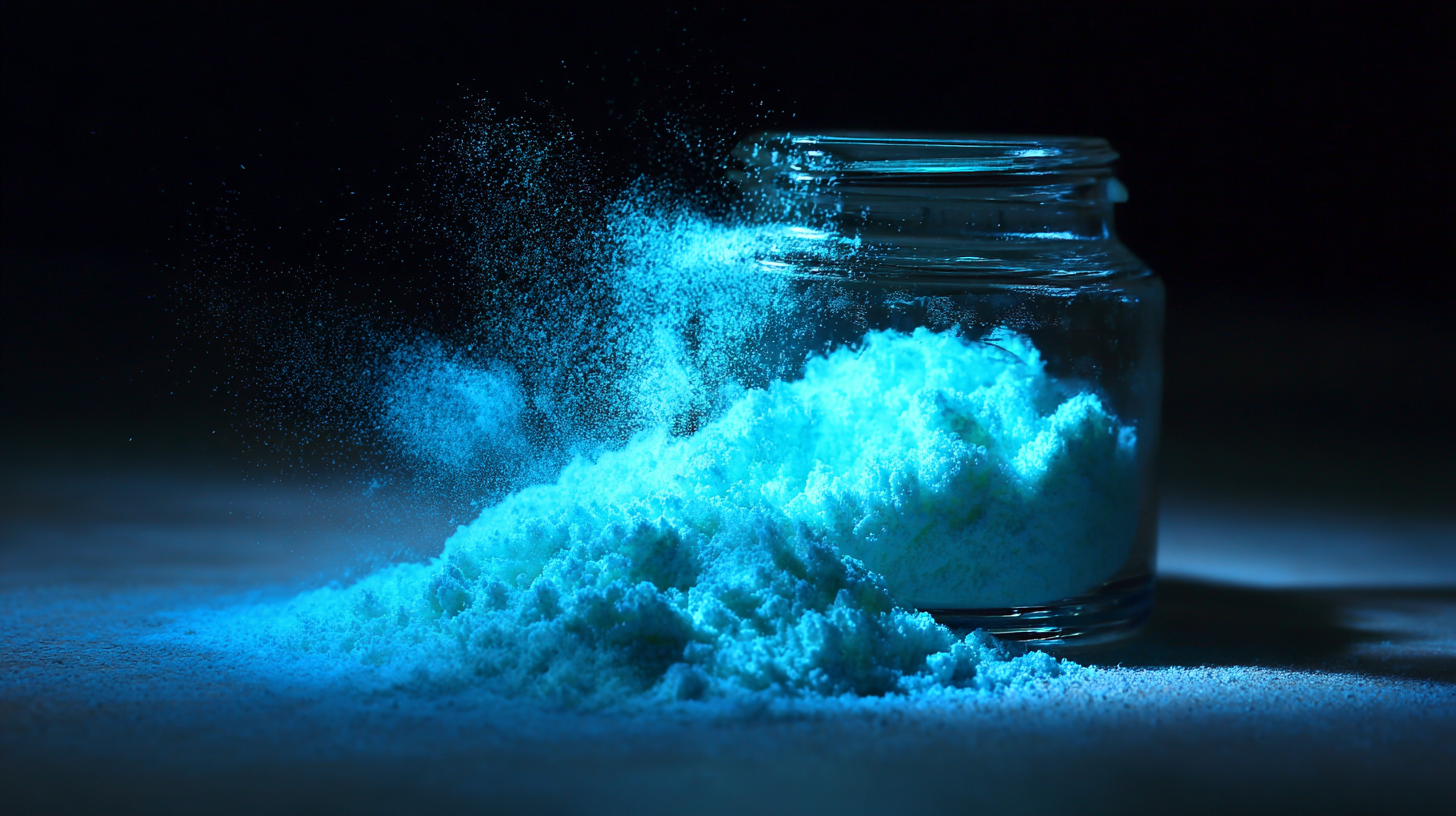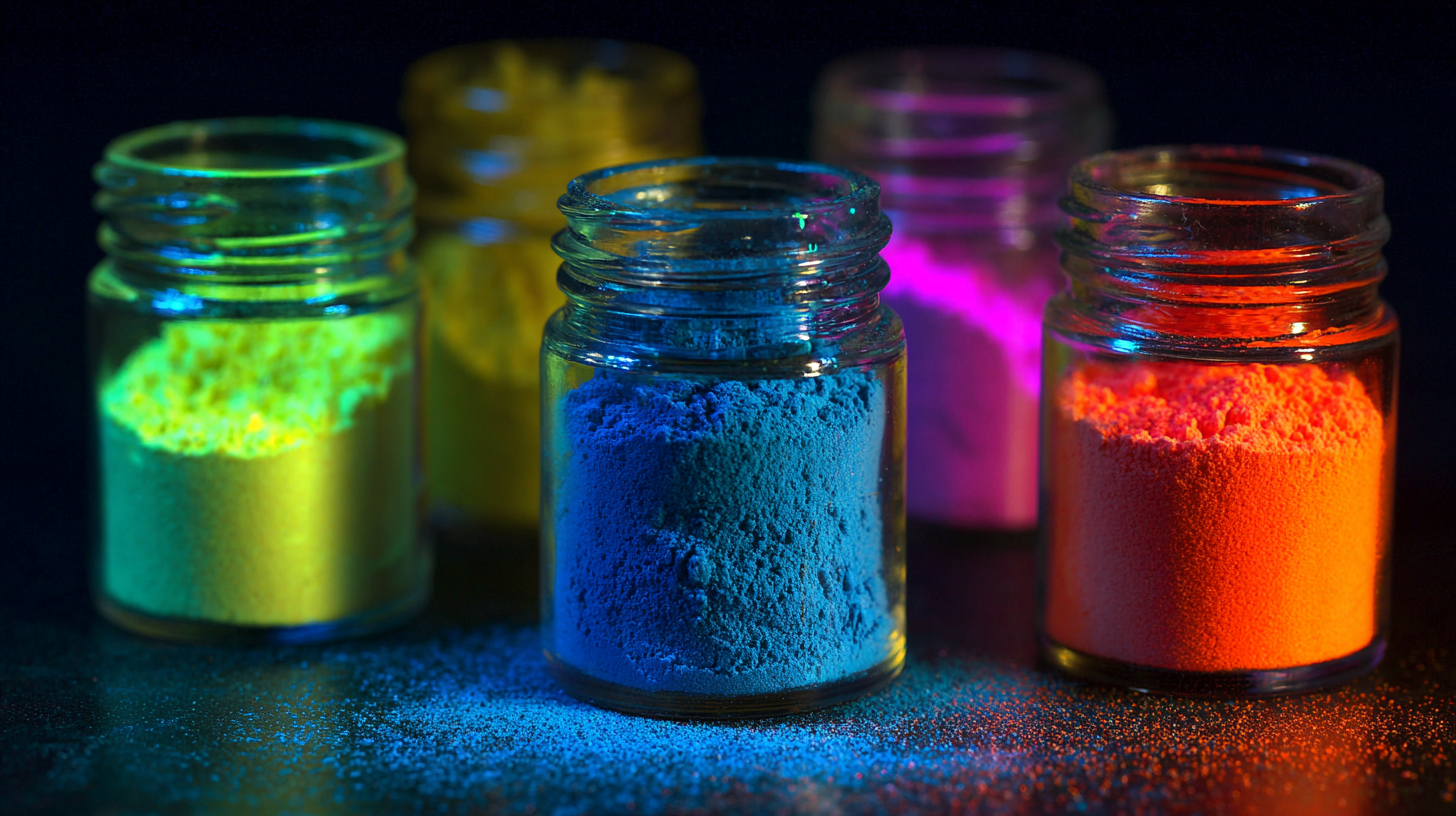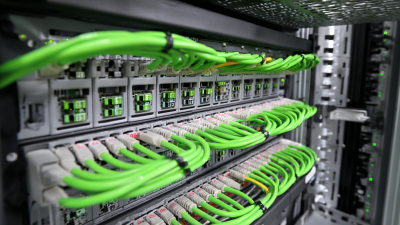Fluorescent powder is a remarkable material that plays a pivotal role in a myriad of applications, illuminating various fields from art to technology. According to a report by the Global Fluorescent Materials Market, the demand for fluorescent compounds is projected to grow at a CAGR of 5.4% from 2021 to 2026. This growth trajectory is fueled by the rising interest in advanced lighting solutions and the expanding use of fluorescent powders in critical sectors such as healthcare, where they enhance imaging techniques. Furthermore, fluorescent powders are increasingly being utilized in the manufacturing of innovative security features, packaging, and environmental monitoring, underscoring their versatility. As we delve into the science of fluorescent powders, we will explore their properties, applications, and potential future developments that continue to light up our world in fascinating ways.

Fluorescent powder, a fascinating component in various applications ranging from lighting to safety signs, is primarily composed of phosphorescent materials that exhibit unique optical properties. These powders work by absorbing energy from an external light source and then re-emitting it as visible light. The composition of these materials typically includes compounds like rare earth oxides, such as europium and terbium, which are critical for producing bright and vibrant colors. Research indicates that the global market for fluorescent powders is expected to reach $4.5 billion by 2025, driven by advancements in LED technology and increasing demand in various industries, including consumer electronics and automotive.
In addition to their composition, the effectiveness of fluorescent powders is significantly influenced by their particle size and surface treatments. Smaller particle sizes can lead to enhanced surface area, which improves the efficiency of light absorption and emission. According to a report by MarketsandMarkets, the demand for advanced fluorescent materials has surged, with applications in high-performance coatings and displays contributing to this trend. Notably, the environmental impact of these materials is also being examined, as manufacturers seek to develop eco-friendly and sustainable alternatives without compromising on performance, setting a new standard for future innovations in this field.

Fluorescence is a captivating phenomenon that enables materials to absorb light at one wavelength and re-emit it at another, brighter wavelength. This process lies at the heart of many applications in science and technology. Researchers have delved into the intricate mechanisms governing fluorescence, revealing that it often involves electronic transitions between excited and ground states of molecules, which can be influenced by various factors such as the chemical structure, environmental conditions, and the presence of additional nanomaterials.
Recent advancements have illustrated the role of fluorescent materials in sophisticated diagnostic techniques, such as the polymerase chain reaction (PCR). The incorporation of nanomaterials into PCR not only enhances the sensitivity of DNA/RNA amplifications but also facilitates efficient light-to-heat conversion.
Additionally, innovative studies have shown how fluorescence imaging can illuminate biological processes, such as immune evasion in hepatic cells, providing critical insights into cellular behavior and interactions. These explorations underscore the significance of understanding fluorescence mechanisms, allowing for the development of novel applications across fields ranging from medical diagnostics to environmental monitoring.
Fluorescent powders are not just a marvel of science; they play a crucial role across various sectors in our daily lives and industries. In consumer products, fluorescence is widely utilized in items like highlighters and safety gears. The vibrant hues of fluorescent markers are essential for emphasizing text, making it easier to read and comprehend. Moreover, in the realm of safety, bright fluorescent colors on vests or signage enhance visibility, ensuring greater protection in low-light situations.
Industrially, fluorescent powders are vital in security applications, such as banknote printing where they help in anti-counterfeiting measures. Their ability to glow under specific lighting conditions makes them suitable for authenticating currency and important documents. Additionally, in the field of medicine, fluorescent powders are used in diagnostic tools and imaging techniques, allowing for enhanced visibility of cellular structures and processes. Thus, fluorescent powders illuminate not only our physical world but also vital operations in multiple industries, showcasing their versatility and importance.
 When working with fluorescent powders, safety considerations are paramount to prevent potential health risks. These materials often contain various chemical compounds that can be hazardous if mishandled. Always wear appropriate personal protective equipment (PPE), such as gloves, masks, and goggles, to minimize exposure to skin or inhalation of particles.
Additionally, ensure that your workspace is well-ventilated to avoid the accumulation of dust and vapors that may arise during use.
When working with fluorescent powders, safety considerations are paramount to prevent potential health risks. These materials often contain various chemical compounds that can be hazardous if mishandled. Always wear appropriate personal protective equipment (PPE), such as gloves, masks, and goggles, to minimize exposure to skin or inhalation of particles.
Additionally, ensure that your workspace is well-ventilated to avoid the accumulation of dust and vapors that may arise during use.
Proper storage and disposal of fluorescent materials are also crucial. Keep these substances in tightly sealed containers and store them away from direct sunlight and extreme temperatures. When it comes time to dispose of unused powders, adhere to local regulations regarding hazardous waste.
Avoid pouring them down drains or mixing them with regular trash to prevent environmental contamination. By prioritizing safety, we can enjoy the vibrant applications of fluorescent powders while protecting our health and the environment.
Fluorescent powders are making waves across various industries, driven by innovative trends that enhance their application and efficiency. Recent market analysis suggests that the global fluorescent powder market is projected to reach USD 2.6 billion by 2026, growing at a CAGR of 5.2%. This growth is largely fueled by advancements in production techniques and the rising demand for bright and vibrant colors in the textile and coatings sectors. Notably, developments in phosphorescent materials have also expanded their utility in safety signage and decorative applications, providing solutions that are not only practical but visually captivating.
Tips for selecting the right fluorescent powder include considering the application environment. For instance, powders exposed to high moisture or UV light should be formulated for durability and resistance. In addition, it's critical to evaluate the spectral properties of the powder to ensure it aligns with specific lighting conditions, maximizing visibility and aesthetic impact. With the anticipated regulatory advancements in safety standards, manufacturers are also focusing on eco-friendly materials, which will reshape the future market landscape.
Overall, as the technology behind fluorescent powders continues to evolve, the future promises exciting new applications. From novel uses in consumer products to enhancements in industrial applications, the versatility of fluorescent powders is set to light up our world in ways we have yet to imagine.






